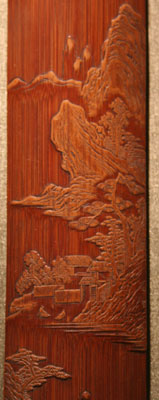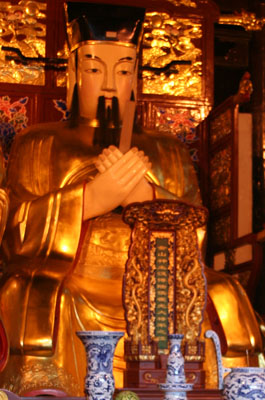Decorative Designs in Chinese Art 中国文物的纹饰
Wood 木料 Background 背景
Click on any word to see more details.
Wood 木料
Background 背景
Wooden furniture was an important medium for decorative designs, mostly carved right into the timber. In ancient China people sat, squatted, and slept on the floor or on a kang 炕 (a heatable brick bed) in Northern China. In fact, most Chinese feel comfortable squatting on flat feet today while Europeans cannot squat on flat feet at all. Ancient furniture was designed from this perspective. Furniture with high legs, such as the chairs and tables that we are familiar with today, was introduced during the Tang. Modern furniture with exquisite art work became widespread in the Ming with the appearance of fine timber from Southeast Asia import via ocean going ships and the development of modern carpentry tools to make the furniture in efficiently.
Architecture was also an important use of wood and often had decorations carved into the wood. This includes items such as doors, window frames, columns, timber roofs, and wall panels. Two great places to see traditional Chinese furniture and timber architecture are the UNESCO World Heritage Sites the Humble Administrator's Garden 拙政园 and the Lion Forest Garden 狮子林, both in Suzhou.
Nails and metal fittings were not used during the Ming in furniture or in buildings. All elements were connected with mortise and tenon joints.
Bamboo furniture and carving is an art that is very distinctly Chinese. However, bamboo rots quickly. Carved bamboo with light color relief 留青竹刻 is a style of relief carving on bamboo where the raised portion is shown in the lighter color of the remaining bamboo skin. The picture below shows a landscape scene on a carved bamboo wrist rest.

Wooden items can also be elaborately painted. The City God 城隍 statue is from Yu Gardens in Shanghai. Temples for such statues originate in Chinese folk religion They were very common in the past and there are still many around in Southern China.
Chinese
Pinyin English
